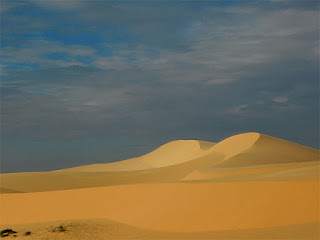Wednesday, 29 July 2015
Vietnam New travel Destination with many hidden beauty
Few countries have changed so much over such a short time as Vietnam. Less than forty years since the savagery and slaughter of the American War, this resilient nation is buoyant with hope. It is a country on the move: access is now easier than ever, roads are being upgraded, hotels are springing up and Vietnam’s raucous entrepreneurial spirit is once again alive and well as the old-style Communist system gives way to a socialist market economy. As the number of tourists visiting the country soars, their talk is not of bomb craters and army ordnance but of shimmering paddy fields and sugar-white beaches, full-tilt cities and venerable pagodas; Vietnam is a veritable phoenix arisen from the ashes.
The speed with which Vietnam’s population has been able to put the bitter events of its recent past behind it, and focus its gaze so steadfastly on the future, often surprises visitors expecting to encounter shell-shocked resentment of the West. It wasn’t always like this, however. The reunification of North and South Vietnam in 1975, ending twenty years of bloody civil war, was followed by a decade or so of hardline centralist economic rule from which only the shake-up of doi moi – Vietnam’s equivalent of perestroika – beginning in 1986, could awaken the country. This signalled a renaissance for Vietnam, and today a high fever of commerce grips the nation: from the flash new shopping malls and designer boutiques to the hustle and bustle of street markets and the booming cross-border trade with China. From a tourist’s point of view, this is a great time to visit – not only to soak up the intoxicating sense of vitality and optimism, but also the chance to witness a country in profound flux. Inevitably, that’s not the whole story. Doi moi is an economic policy, not a magic spell, and life, for much of the population, remains hard. Indeed, the move towards a market economy has predictably polarized the gap between rich and poor. Average monthly incomes for city-dwellers are around US$100, while in the poorest provinces workers may scrape by on as little as US$30 a month – a difference that amply illustrates the growing gulf between urban and rural Vietnam.
Read more: roughguides
Mui Ne
The in the past minimal possessed shoreline south of the angling town of Mui Ne has seen a few genuine advancement in the most recent 15 years. Because of solid ocean breezes it is a famous destination in Vietnam for kite-and windsurfing. No outing to Mui Ne is finished without a trek to the renowned sand ridges found a short separation north of the town. The incomprehensible sandy scope give some extraordinary all encompassing perspectives particularly amid dusk.
Phu Quoc
Located in front of the Cambodia coast, Phu Quoc is the largest island in Vietnam. Phu Quoc is what Phuket would be if it hadn’t been overrun by development. The island features pristine tropical forests, undamaged coral reefs and great beaches. One of its beaches, named Bai Dai (Long Beach), was chosen by the ABC News as one of five beautiful and clean beaches. Phu Quoc is famous for producing the best nuoc mam or fermented fish sauce in the world.
Thien Mu Pagoda (Hue)
With seven stories, the Thien Mu Pagoda in Hue is the tallest pagoda in Vietnam. The pagoda overlooks the Perfume River and is regarded as the unofficial symbol of the former imperial capital. The temple was built in 1601 during the rule of the Nguyễn Lords. The initial temple was very simply constructed, but over time it was redeveloped and expanded with more intricate features.
this are some vietnam places that you can visit for more places maybe you can go to : touropia
Subscribe to:
Post Comments (Atom)


















0 comments:
Post a Comment